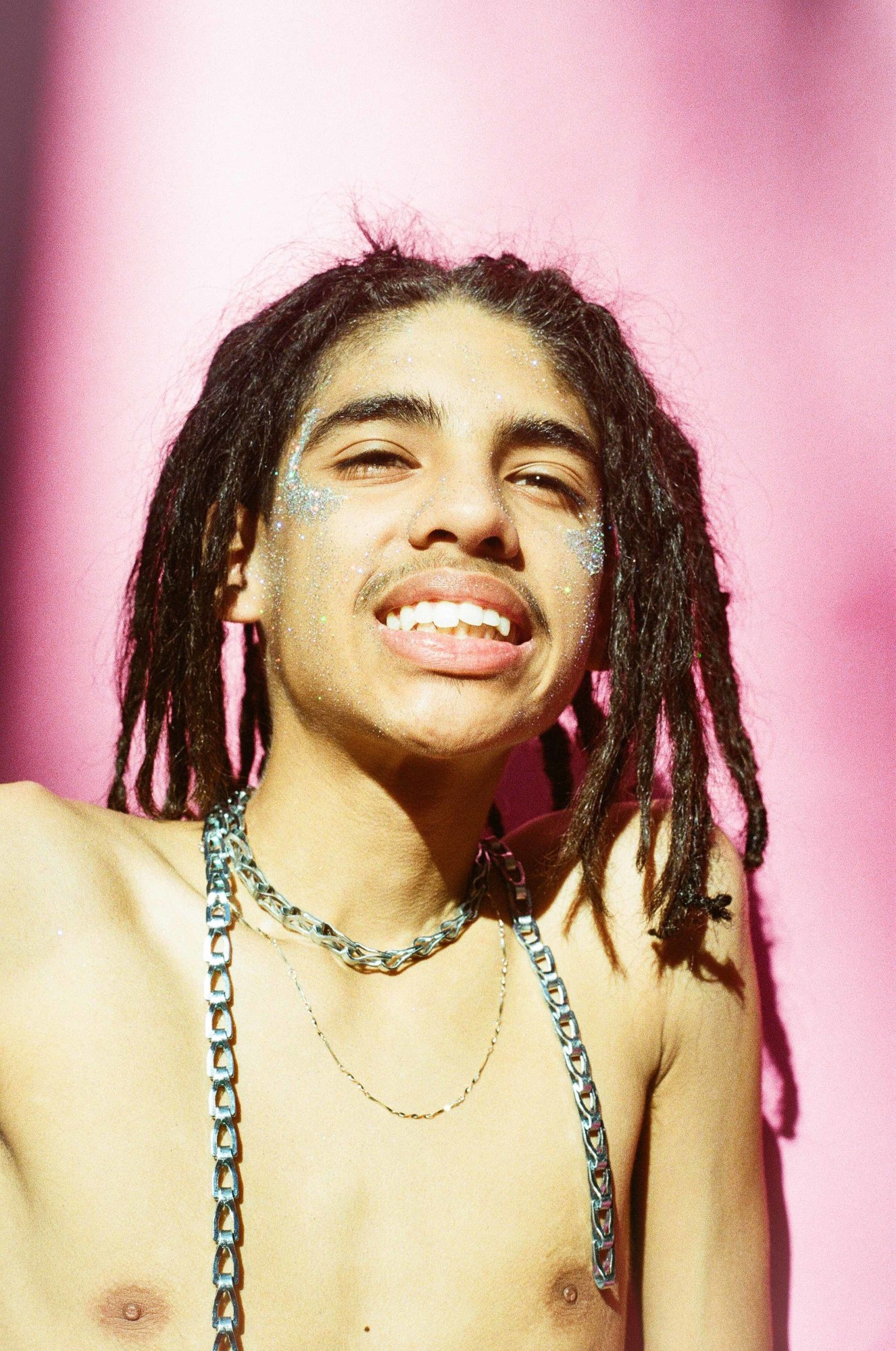When the young photographer Quil Lemons was 17 years old, Frank Ocean alerted his fans via Tumblr that he had created a Snapchat by simply posting: “SNAPCHAT: AREALGLITTERBOY” (subheading: “will shine and shine and shine”). That moment, along with the following year’s “Nikes,” challenged everything Lemons grew up believing about black masculinity in South Philadelphia in the early 2000s. What is a “glitterboy” and how does it relate to gender and race? Ocean’s glitter and mascara-covered face in the “Nikes” video was on Lemons’s mind when he powdered his face with eyeshadow and a constellation of silver stars and took a picture. He posted the image on social media with a caption that read, “a real n***a wears makeup.”
“It started a conversation,” says the now 19-year-old photographer and college student. That conversation inspired Lemons to create “Glitterboy,” an ongoing portrait and interview series of black boys and men whose faces are painted with glitter. Lemons’s studio portraits of shirtless black boys and men is set against a pink backdrop. The pictures challenge the mainstream media’s misconceptions around their identities and the black community’s policing of black masculinity. Before Lemons takes a photograph of a subject he asks, “As a black man, do you find it hard to express femininity?” The responses are as powerful and revealing as the portraits themselves. The young model Jourdan said, “I would try to hide my hair, wear baggy clothes, make sure the little bits of hairs I had on my chin showed, try not to sing along to Beyoncé and even not post certain pictures [on social media] because of the thought of being called soft.” He added, “Now, I’ve learned that it’s not what my interests are that makes me a man.”
We catch up with Quil Lemons to discuss how he’s using his perspective to challenge ideas of black gender and sexuality.
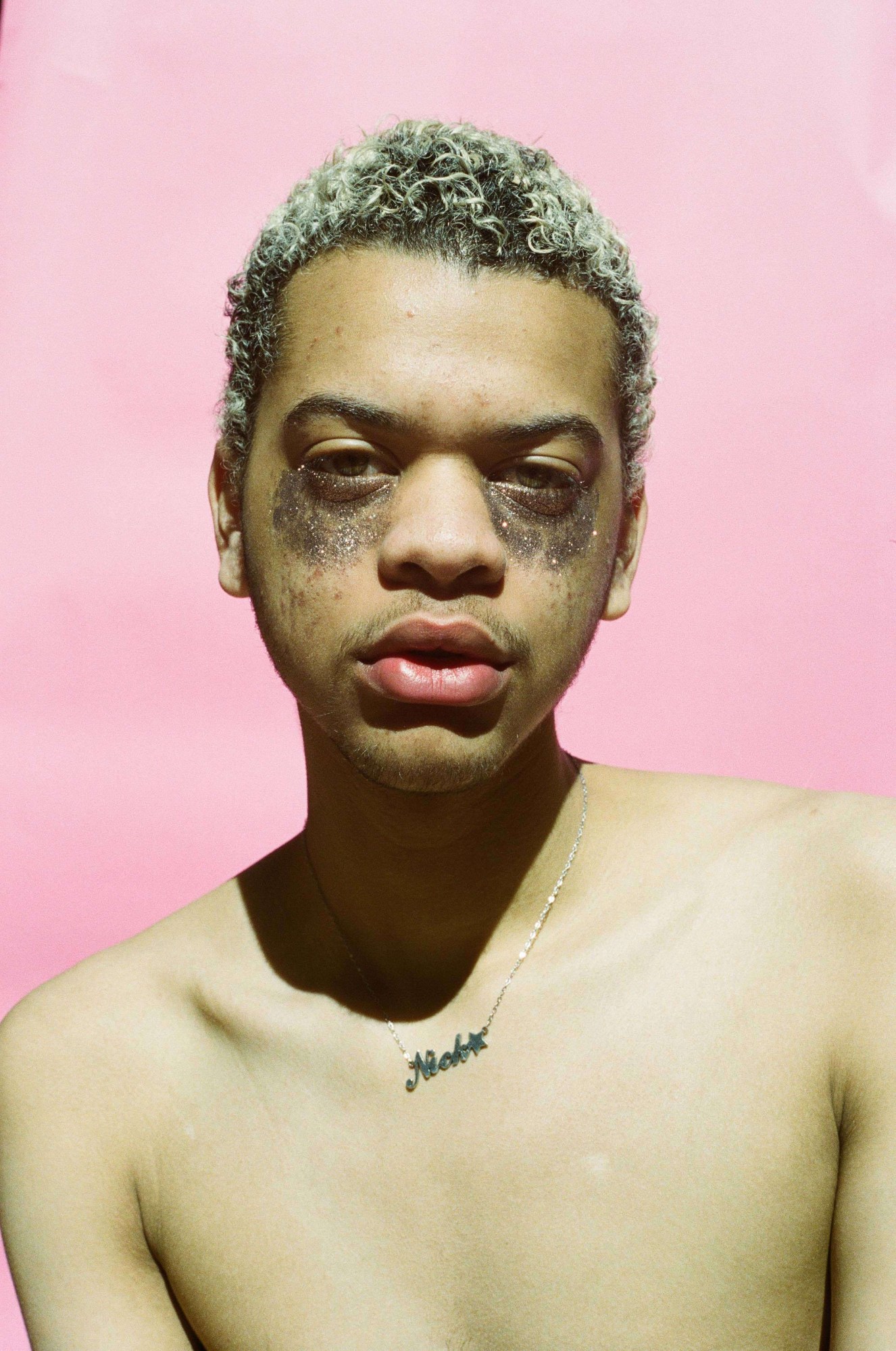
What is it about Frank Ocean that inspires you?
I think those lines on Tumblr was Frank Ocean commenting on his sexuality. It was still taboo in 2015 for an artist like Frank to comment on his sexuality and he put himself out there. The line “will shine and shine and shine” really spoke to me because black boys aren’t given much space to shine and I felt like that was a nod to boys like him. Black men need to shine and we are not told that enough. I decided to do a series of black boys wearing glitter because in the media you don’t really see black boys experimenting with anything that’s really feminine or embracing themselves in that way.
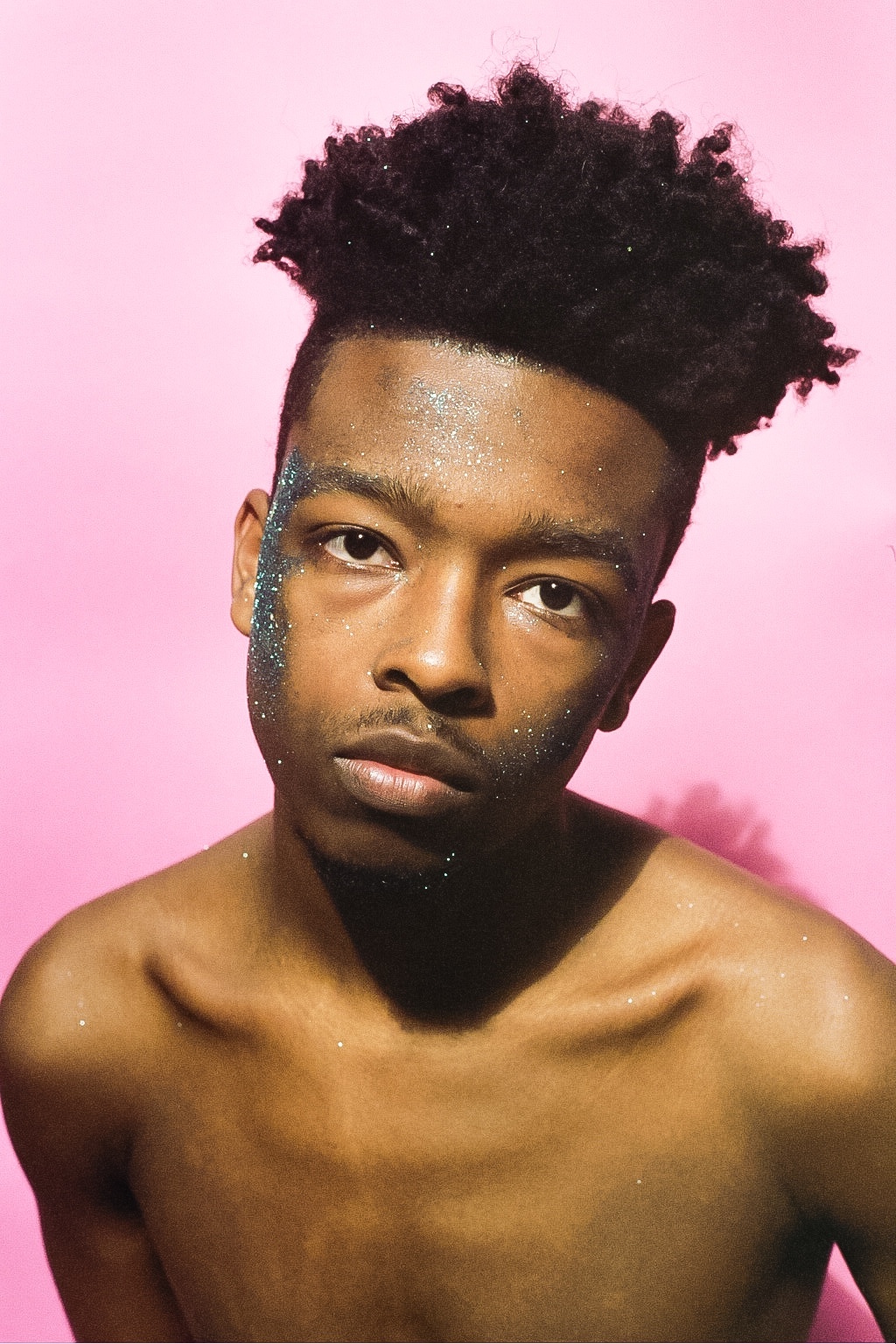
How does the project shine a different light on black masculinity?
Black masculinity always gets type-cast as “like a gangster.” This project says we are not just that. You can be pretty or feminine and you can still be masculine and a black man. However you feel confident is an expression of who you are.
Sometimes we conflate masculinity with sexuality. These portraits aren’t necessarily about sexuality. Your subjects are straight, gay, and queer black men of different ages and builds who communicate their own definitions of masculinity through the images.
Through this project I am trying to show that you don’t have to be gay to wear glitter or makeup. There isn’t one way to be masculine. I think black men aren’t really warranted that space. A lot of my models are friends and even to have them open up and wear makeup was a challenge. They were a little hesitant at first. They were like, “Oh my god, I’m a dude, I can’t really wear makeup.” And as I took their pictures they got more comfortable and I think they got to a place where they felt like, “Naw, even though I’m a dude I can wear glitter and I’m still a black masculine man.” It’s such an antique concept. We are in 2017. You can do whatever you want.

Did this project change your perceptions of masculinity?
Yeah. Honestly, I was nervous asking boys to model for this. It surprises me in 2017 that we still carry deeply held ideas about what masculinity is and isn’t that prevent us from acting certain ways and being truly who we are. I realized through the project that masculinity should be all-encompassing. It’s not just one thing, it’s a spectrum. This isn’t the early 2000s where you had to wear baggy pants or be thuggish. Now Jaden Smith and Thugger are wearing dresses. Those deeply ingrained stigmas and concepts are being shot down. This project made me realize I can be masculine in any way I want.

What do you want to achieve with this project?
I feel like masculinity is sort of a prison. We are told there are only so many ways you can be masculine. If you express femininity in the slightest you are automatically perceived as gay. There’s nothing wrong with being perceived as gay, but you can be masculine and gay or feminine and straight. Now we have more space to play with gender fluidity. So much has changed and this project is an ode to being your fucking self.
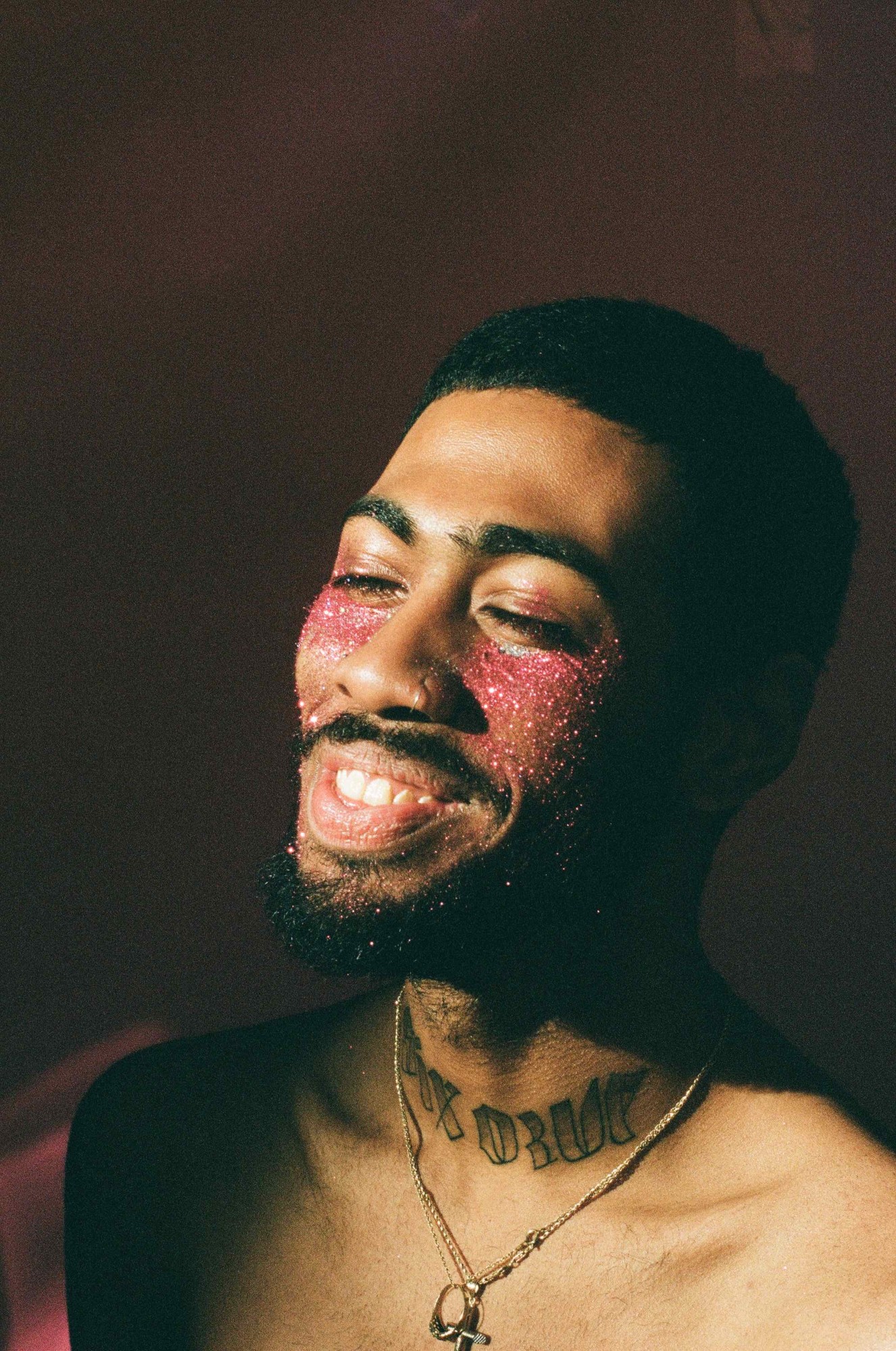
Who would like to shoot in the future?
Ashton Sanders from Moonlight. Ashton’s portrayal of Chiron was amazing and it felt real. He’s become in a sense the face of what a young black boy is right now. I want to shoot him because he defies all the misconceptions of black masculinity and all the things we are told we are supposed to be. He shows that black men have more mobility in expressing their sexuality. I also want to shoot Young Thug because he wears dresses, dates women, and his music is still played in the hood because he’s one of the best rappers right now. And Frank Ocean, of course.
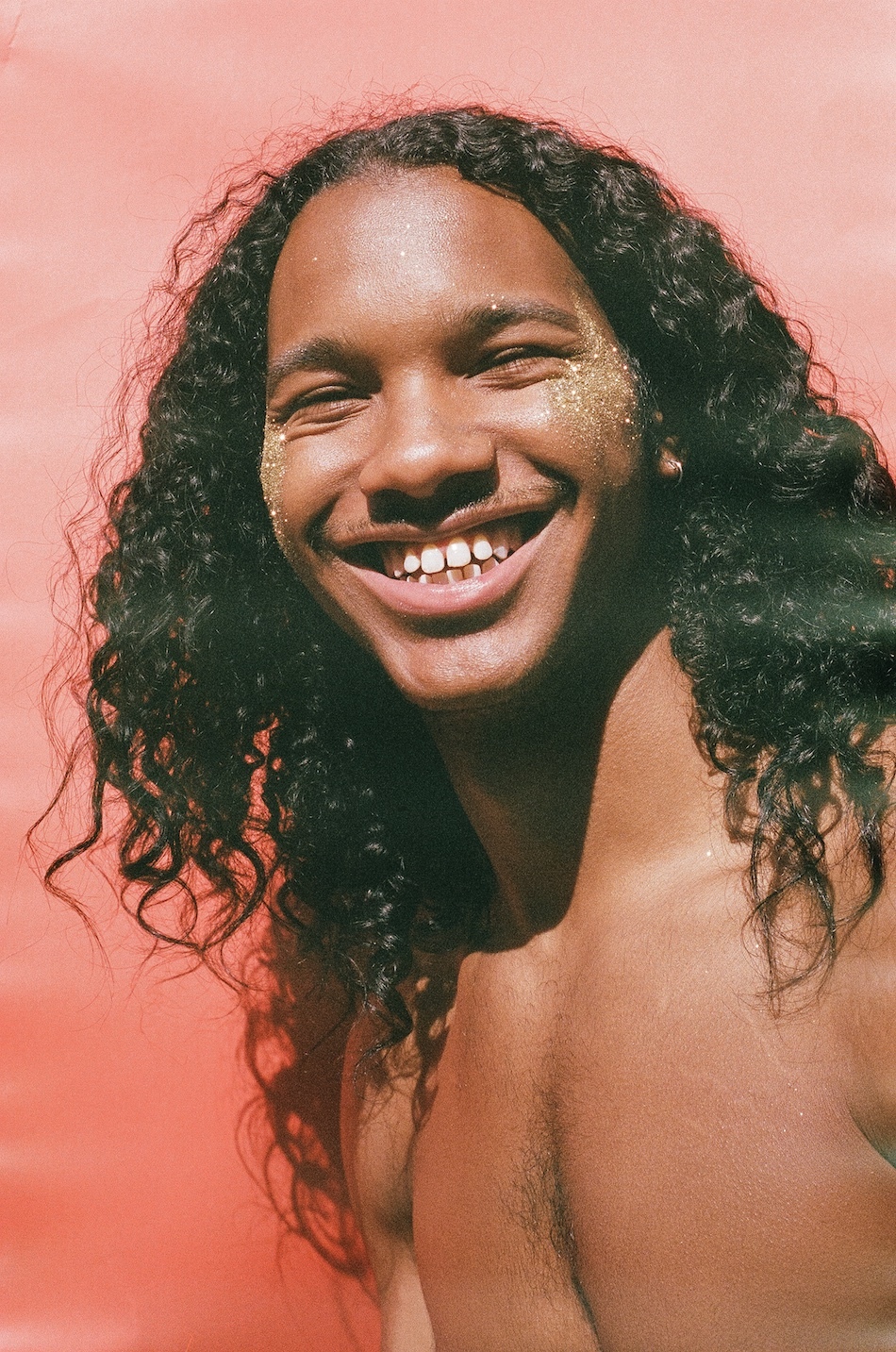
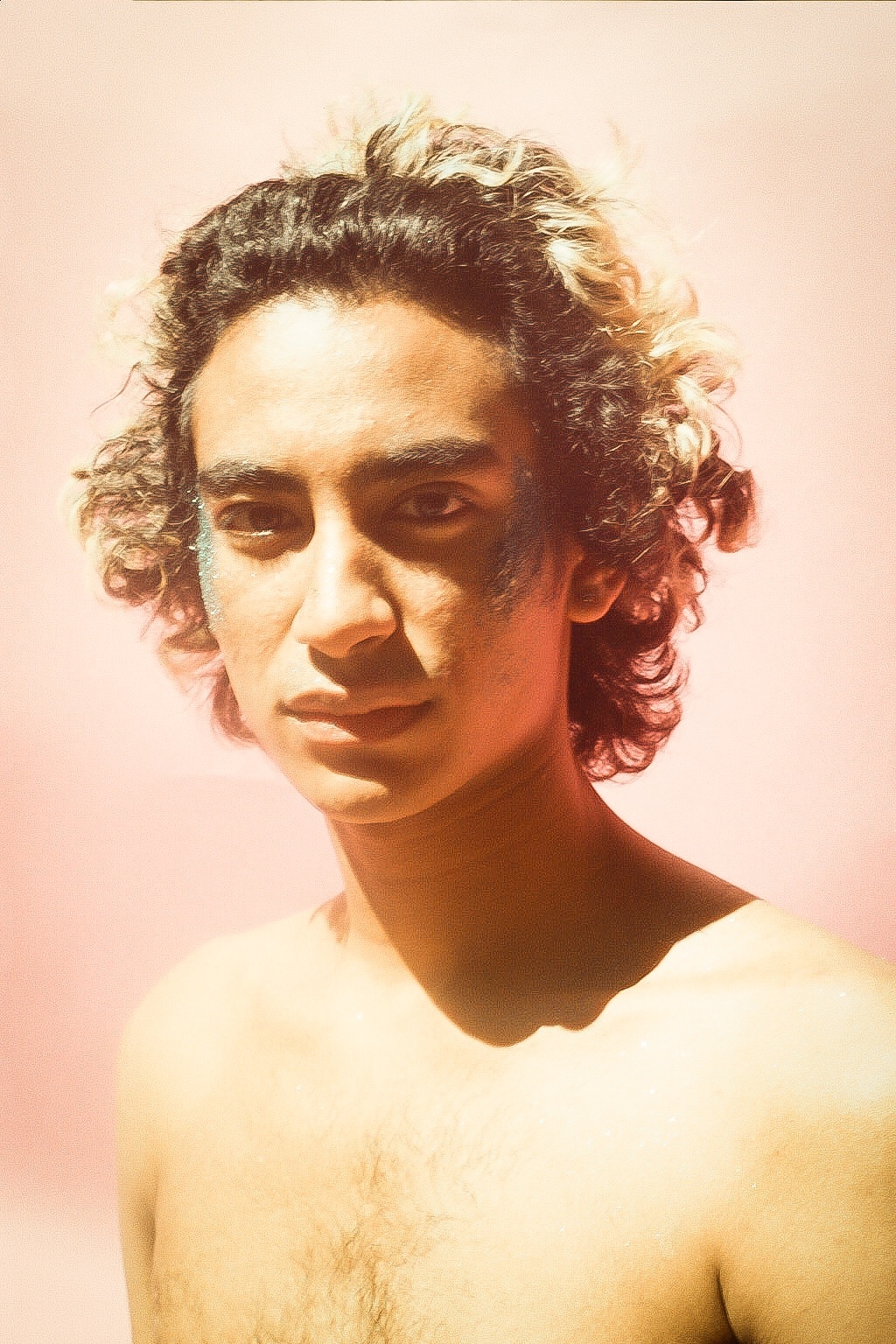
Credits
Text Antwaun Sargent
Photography Quil Lemons
